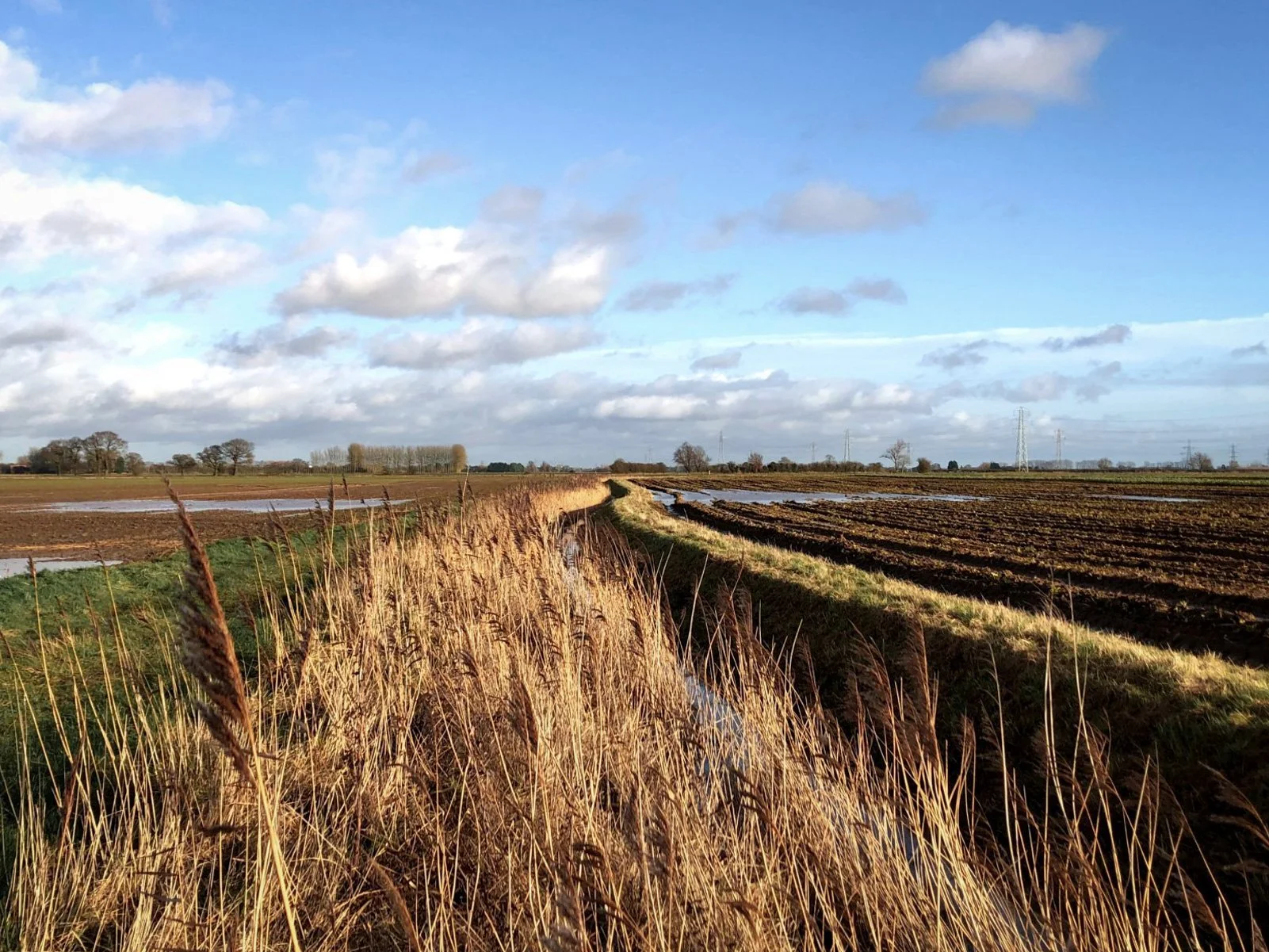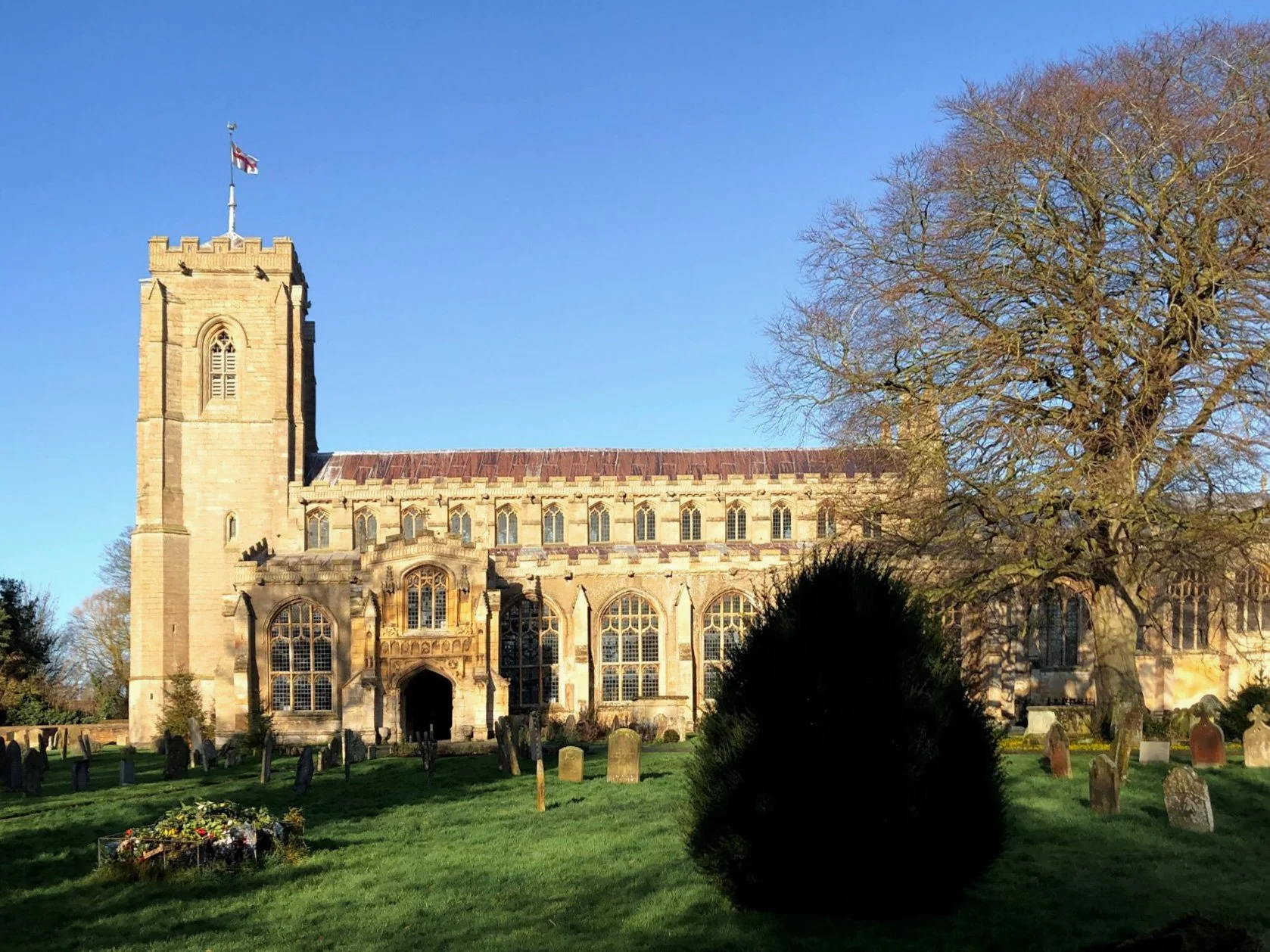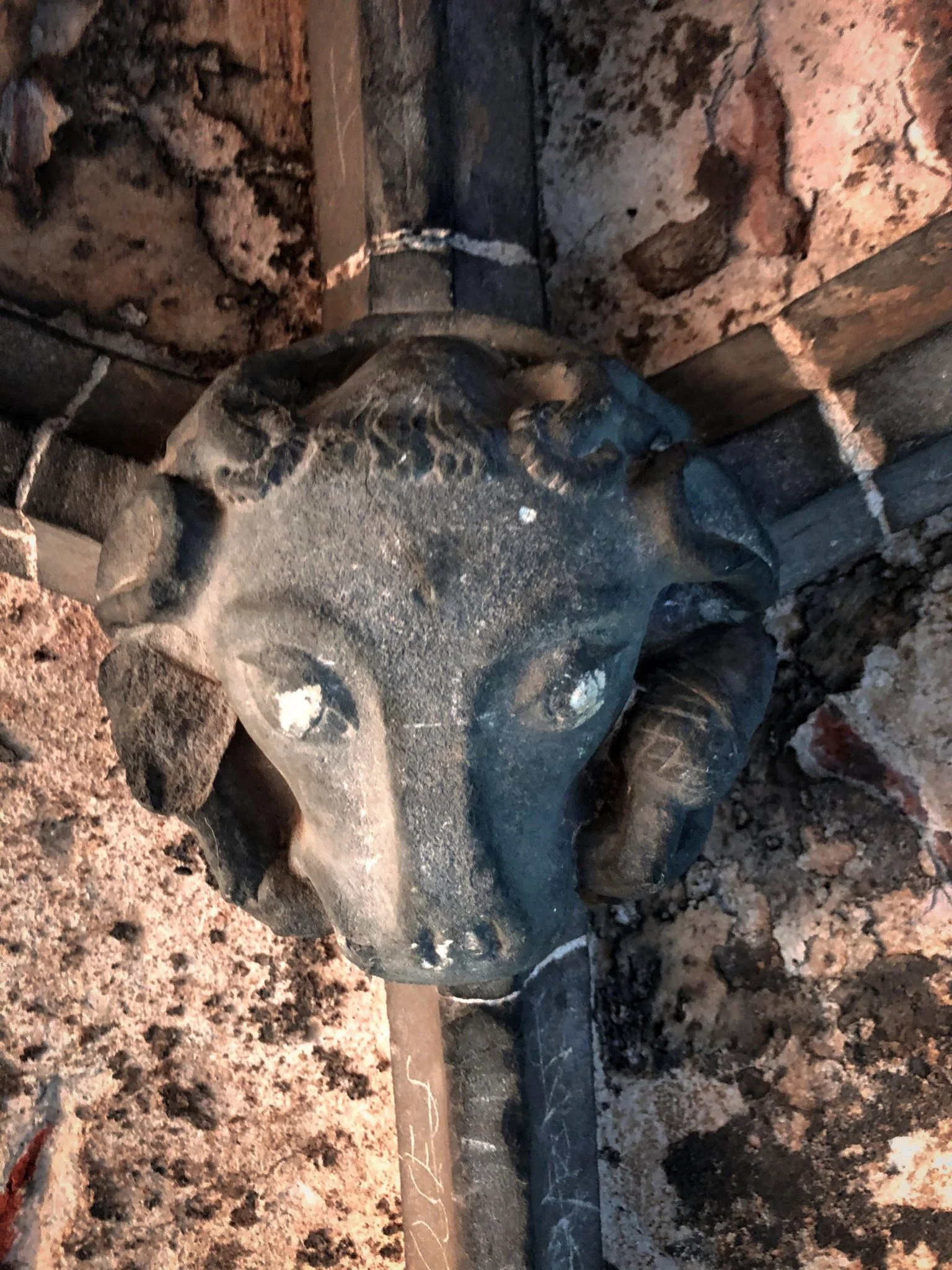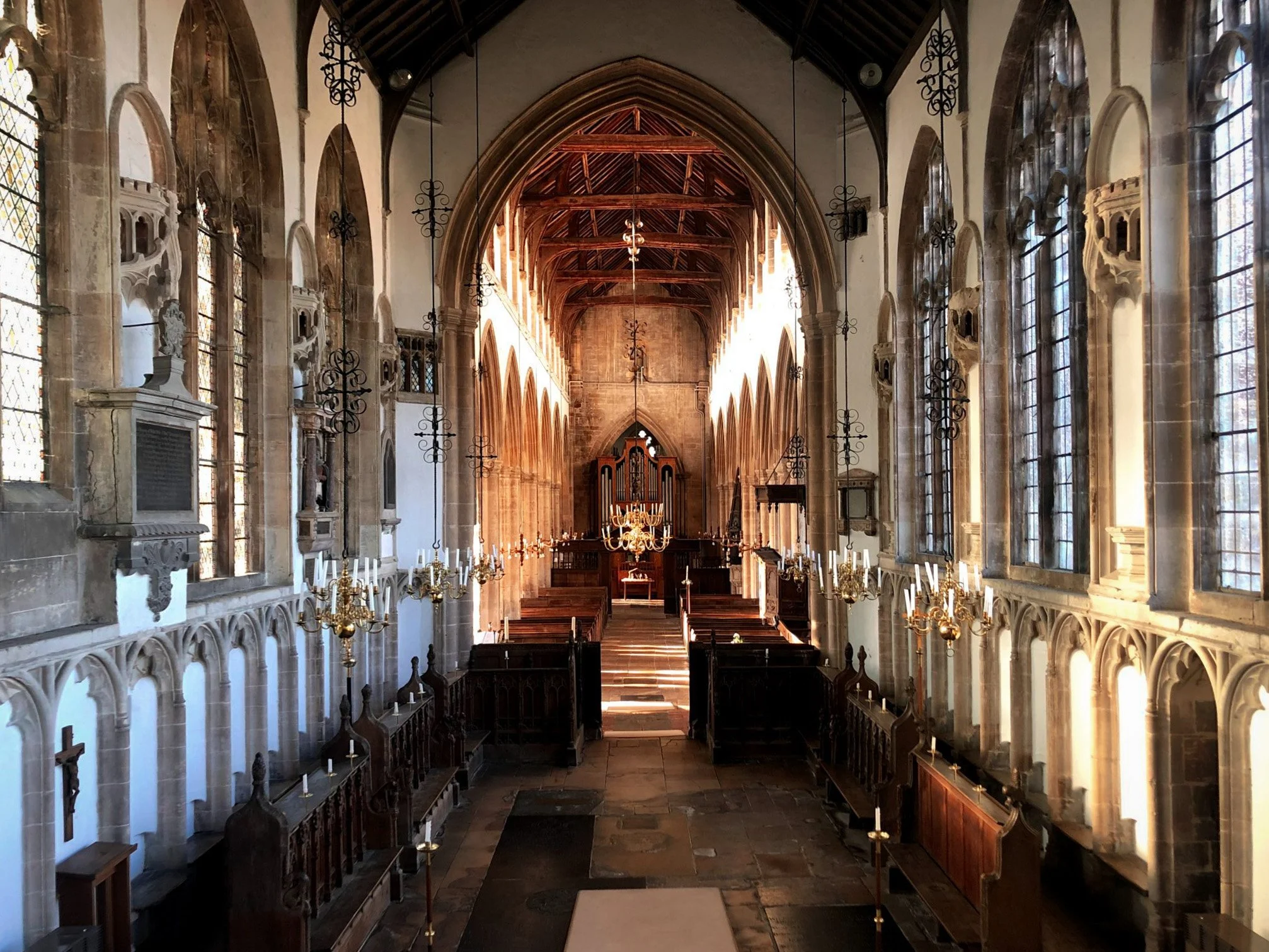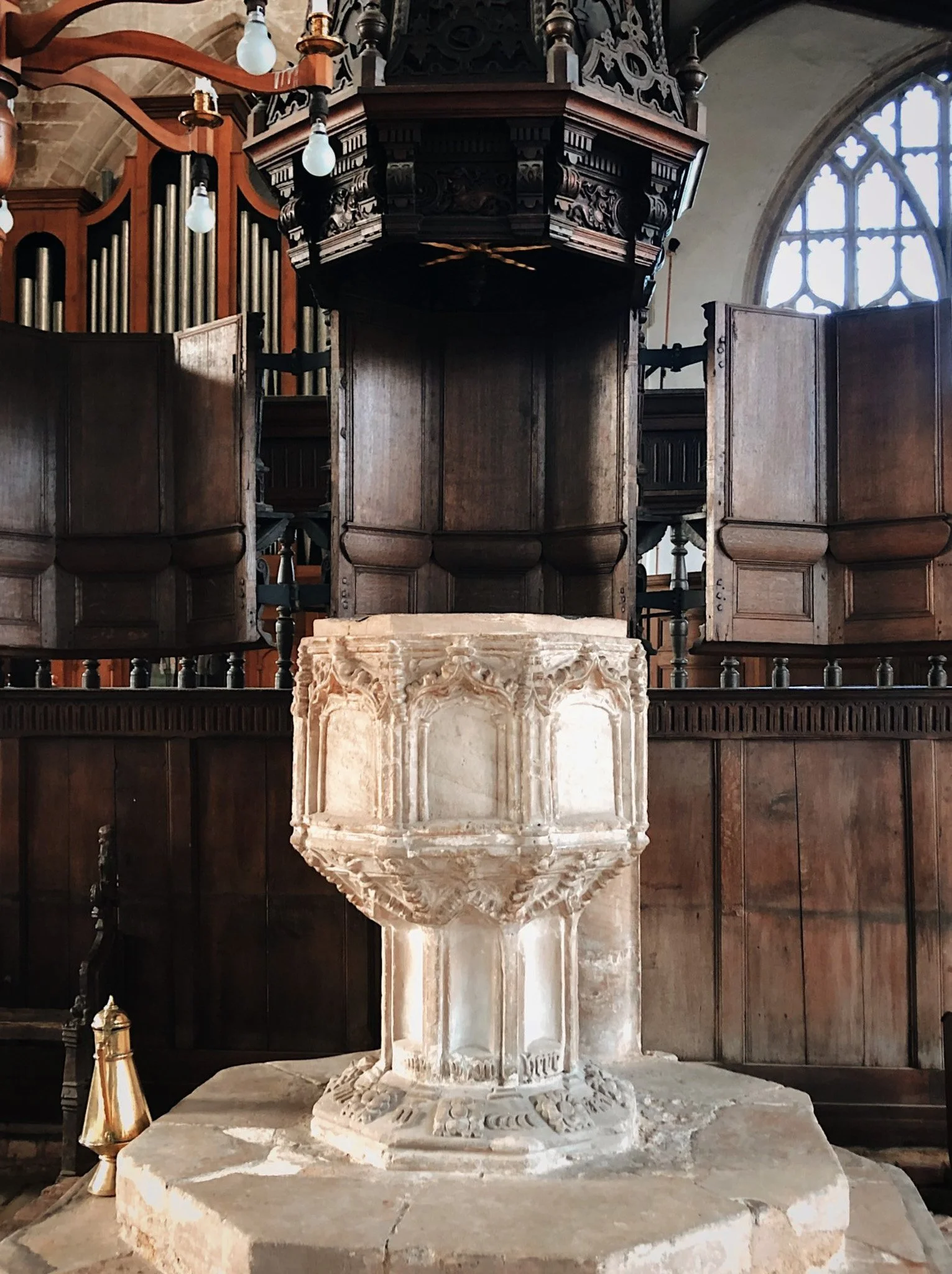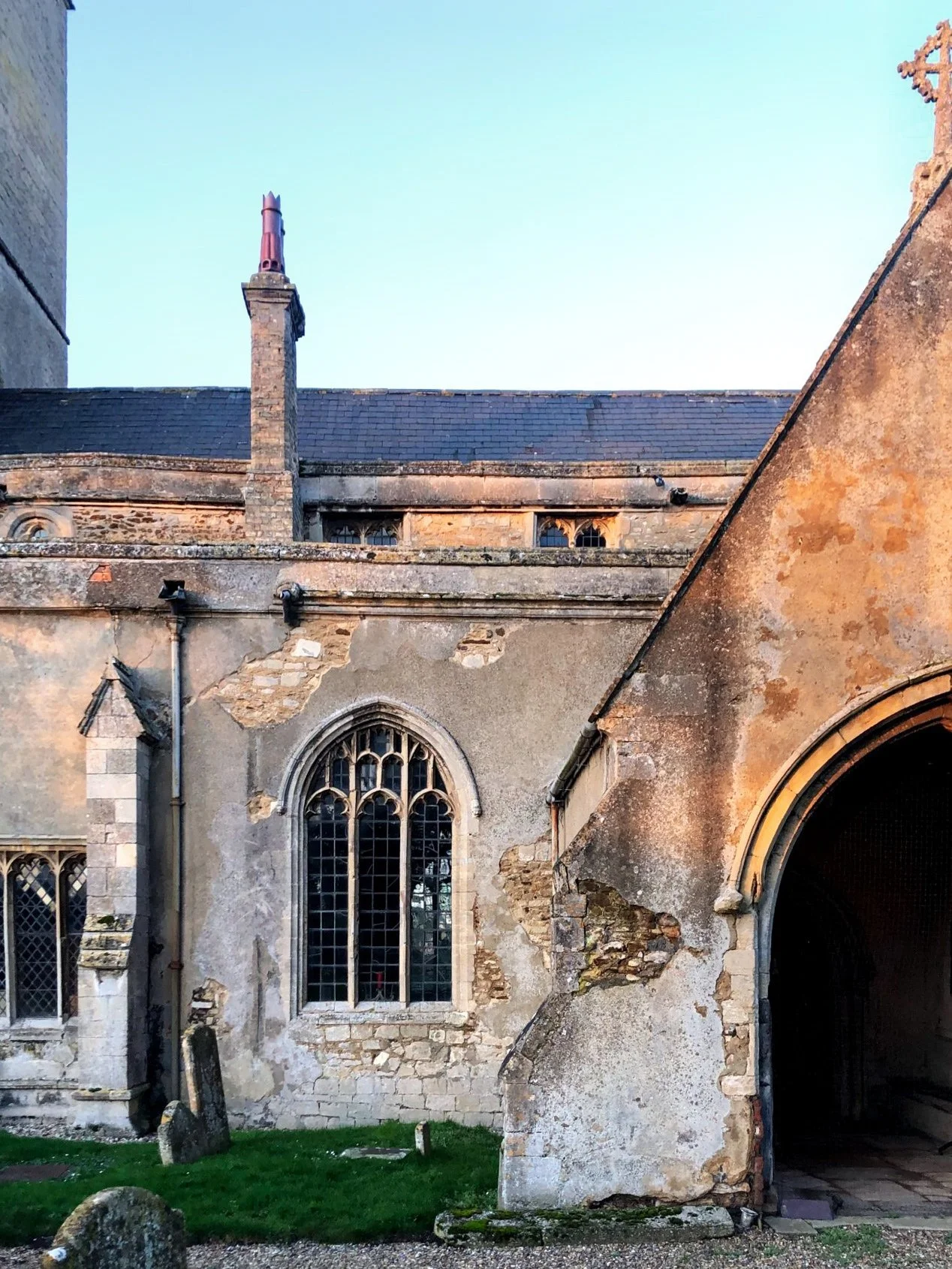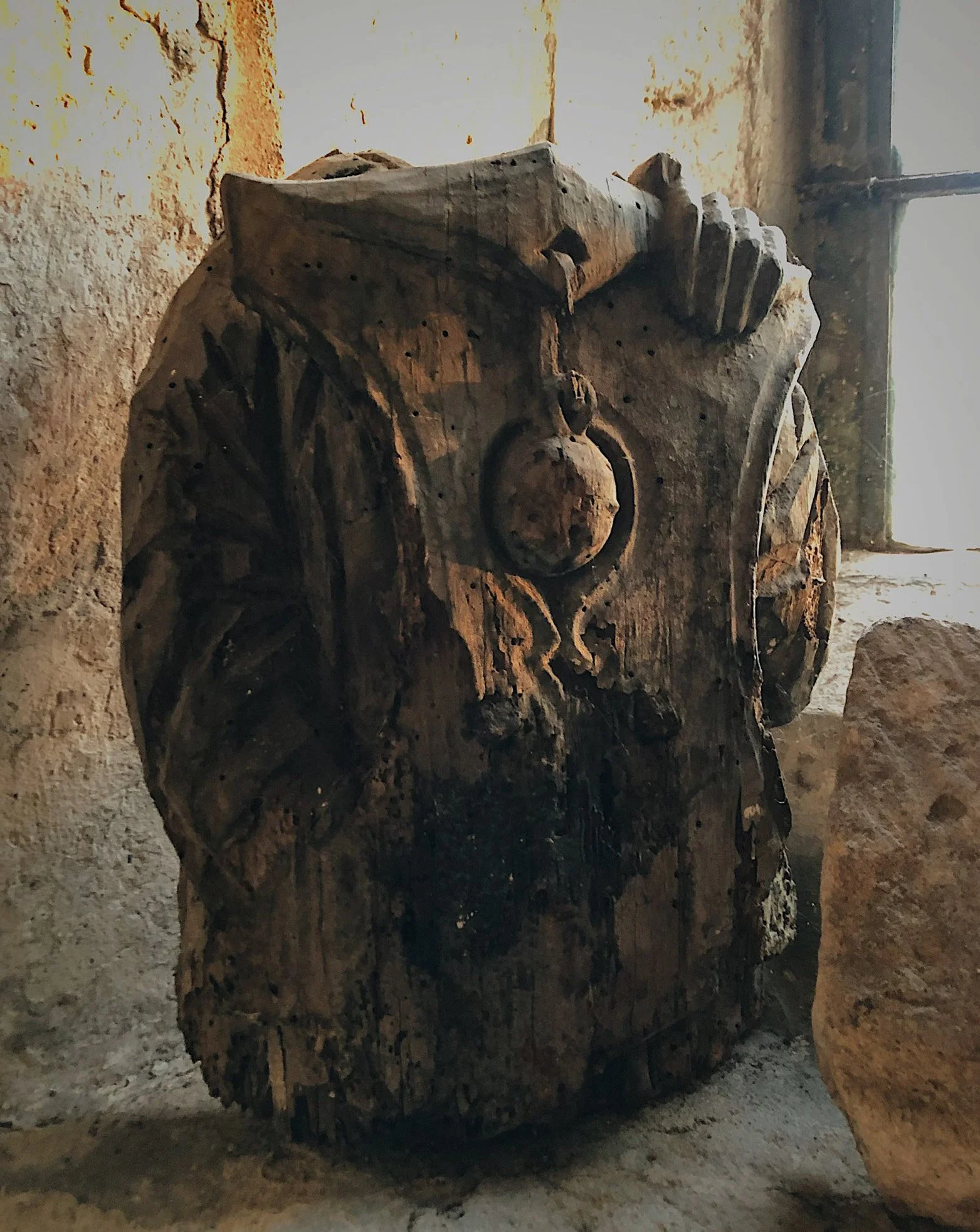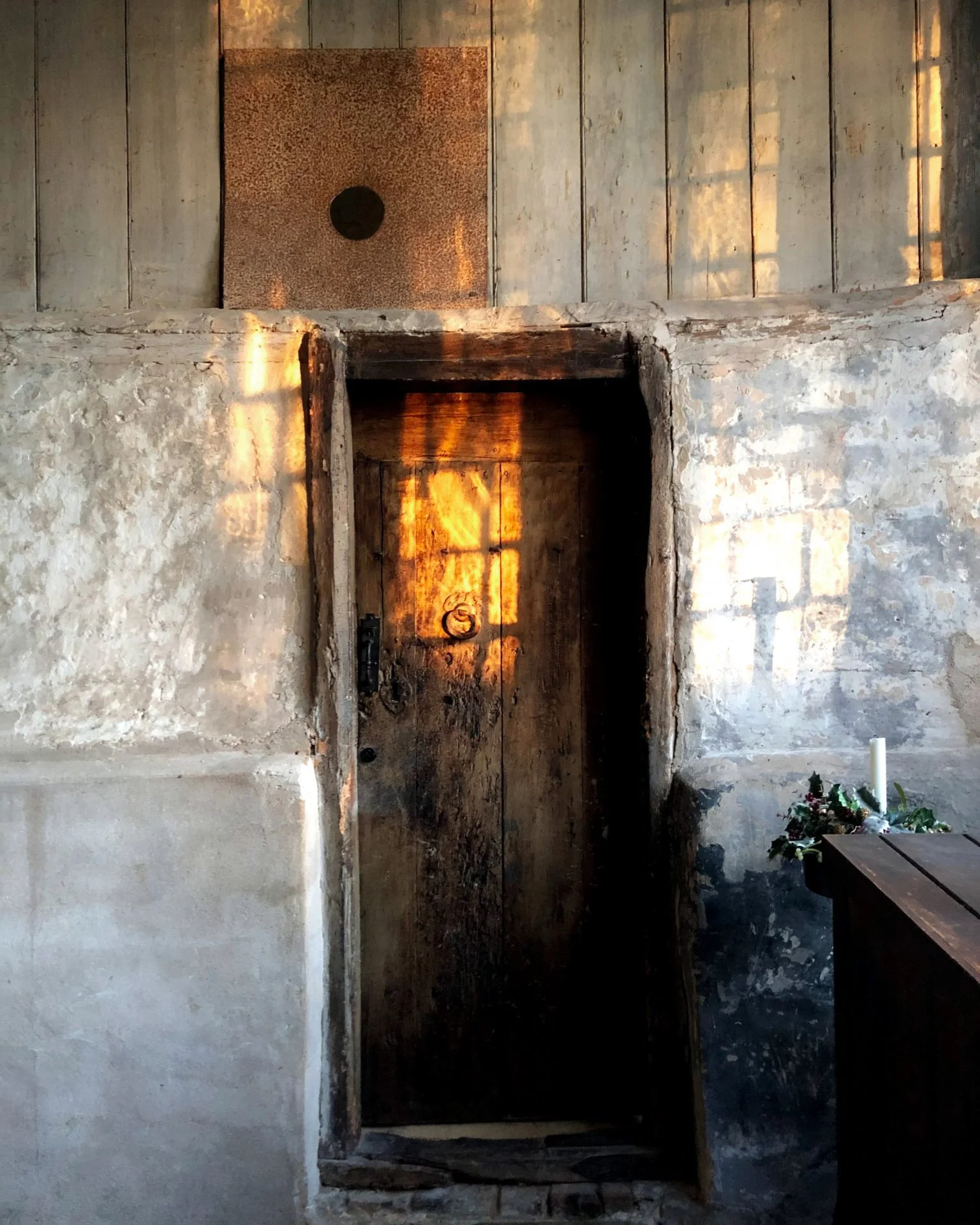A Fenland Odyssey
A few miles from Kings Lynn and I began to understand the disorientating flatness of the Fens. Ahead, the remaining daylight was consumed by an enormous continental darkness. Behind, a low winter sun shone its last thin orange band beneath fathoms of deepening blue. In this land of silt, still some way from the medieval port town that was my destination, I possessed a growing sense of being on the edge of an island, before low earth gave way to shallow sea. The stars accumulated from the east as I reached yet another drainage ditch, forcing me sideways in search of another route. It was curious how exhilarating this hike was, the remote empty rush of twilight, no clear footpaths to follow, just sky, water, field, and the nearby drone of the A17.
Norfolk Marshland: “flat, with an unrelieved and monotonous flatness”
Perhaps it’s the absence of topography that ushers in the Fenland imagination. The uncluttered hush, the enshrouding mists, that have for centuries, perhaps millennia, given way to a colourful cast of folk characters. This is the land of the bog spirit Tiddy Mun; where ghostly Lantern Men stalked the horizon; where flickering will o' the wisps lured unsuspecting travellers into their watery fastness; revered cunning folk healed ailments and warded off evil spirits. Something of the fantasy qualities of the Fenland mindscape were captured by Graham Swift in his lyrical novel, Waterland. Here the narrator describes the wartime Fens of his youth “…we lived in a fairytale place. In a lock-keeper’s cottage, by a river, in the middle of the Fens. Far away from the wide world…” where it was “flat, with an unrelieved and monotonous flatness, enough of itself, some might say, to drive a man to unquiet and sleep-defeating thoughts.”
I began to experience these unquiet thoughts as my own skirting the gloomy fields of far west Norfolk, wondering if I could find a clear path to Lynn. Having flown back from China the previous day I was certainly sleep defeated. Yet, padding out from the last muddy field and into the suburban streetlight and chattering television sets of a bungalow lined lane near the crossing of the River Great Ouse, I felt something close to elated.
Tired and cold after having covered ten or so miles whilst excessively jetlagged, my Fenland odyssey had nevertheless restored something in me. The descriptions had delivered. Bleak. Desolate. Isolated. These were the common adjectives. Yet what I read these to mean had been emptiness, lush solitude and big sky. This is what I’d needed. The first two weeks of my year had been spent holed up in Beijing office blocks and hotels, negotiating contracts with the deftly named “Centre of the Science and Technology of Industrialization Development - Chinese Ministry of Housing and Urban Rural Development.” There’d been murmurs of a virus in Hubei province. No-one seemed overly worried. I’d texted some family and friends about it when I got back to my hotel one evening. It all seemed quite distant.
On the flight home it was clear the heavy work schedule and sensory overload had taken its toll. My brain was a thickened knot, no matter how many miniature G&T’s I glugged to loosen it up, nodding at the inflight entertainment. Bleary eyed and body clock sizzling, I needed to recalibrate. Following the flight map, counting down the last few hours before arrival, the mysterious Fens rolled through my thoughts as I traced England’s shapeshifting eastern shoreline; the bulge of East Anglia capped by the rectangular Wash estuary. That’s where I could go. Where it’s flat and they say there’s nothing. There was a spatial craving to satisfy. An intense lust for quietude. Back in my London flat, showered, I was soon plotting my journey, checking train times, yearning for the featureless glory of the Fens.
Of course, I knew the Fenland churches were thought by the connoisseurs of such things to be amongst the most remarkable in the land. The enigmatic architectural historian Alec Clifton-Taylor, renowned for his BBC ‘English Towns’ series of the late 70’s and early 80’s, had thought one of these churches, Walpole St. Peter, to be “probably the finest village church in England.” Others felt similar. How could it be that these monumental churches were out there awaiting discovery in the watery Fens? How and why were they built? Now was the time to find out. Having been given the following day off work to sleep and recover, my pilgrimage over the flats began to take shape whilst I drifted on the margins of sleep.
St Peter’s, Walpole St Peter, Norfolk - “probably the finest village church in England”
*
The lowest point in Britain is Holme Fen in Cambridgeshire, around 2.75m (9ft) below sea level. For over 170 years this already low-lying land has been shrinking and sinking. It stands, or sits, as testament to the transformational pressures that have wrung dry this formerly rich and extensive marshland; a flooded plain where once the ancient rivers of England flowed before fanning sluggishly into the silted estuary of the North Sea. Now these rivers have been hemmed in. Banked dykes, drains and roads sit above sunken fields. A ceaseless battle waged to keep the waters out.
Those who promoted Fenland drainage foresaw the impacts of their undertakings. William Wells of Holmewood Hall, the prime mover in a group of local landowners draining Holme Fen and neighbouring Whittlesey Mere, decided early on to gauge the oncoming subsidence. With steam powered pumps emerging in the late 1840’s, far more effective than anything imaginable even a generation before, their grand vision to take on England’s largest lowland lake was now possible. As the waters began to flow out in 1848 a timber pile was struck into the land and cut flush against the surface at the drained Holme Fen. In 1851 this post was replaced by a cast iron column. By 1860, the contracted earth had already sunk below sea level. By 1957 it had fallen so low as to make the post unstable, so that it required steel guys as support. A second post was added at this time, though buried much deeper. Today, those posts, standing 13ft high, can still be visited. It turned out Holme Fen remained a defiant little patch, still too boggy for profitable farming. So it is that somewhere within a silver birch woodland managed by Natural England, you can still visit the famous Holme Posts; a type of curious civic sculpture to the lost Fen peatlands.
In its own way, the surrender of Whittlesey Mere in the mid 19th century can be viewed as a symbolic moment in the emergence of the anthropocene. This was one of the final acts in a story that took a little over two centuries to unfold, ever since the Dutch engineer Cornelius Vermuyden was first invited by Charles I to begin the drainage of Hatfield Chase in 1626. From this time to the mid-19th century the world's pioneering industrial power completed the near total transformation of a landscape that had first emerged some 4000 years before. What was once a vast coastal plain, where tidal saltwater met outflowing fresh water, became reformulated as an open productive agricultural landscape intersected by channels and ditches. One of the most biologically diverse ecosystems in Europe reduced to a landscape where native wildlife only clung on in pockets, margins, and reserves.
In total the Fens cover around 1500 square miles across the counties of Lincolnshire, Cambridgeshire, and Norfolk. Fenland place names remain in memoriam to the time before the great drainage. The ‘Isles’ of Ely and Axholme were literally that, islands in the marsh, areas of higher land where settlement could take place. South Holland in Lincolnshire takes its name from the Anglo-Saxon for high ground, where villages were able to coalesce on the silt ridges of the Wash estuary. There is a whole lexicon of water and sludge. One online blogger has gone to the effort of compiling no less than 550 Fenland ‘landwords’ and there is an intoxicating atavism to be found in their discovery and use. The Germanic, Norse and Anglo-Saxon worldview lives on. Lost sheets of water remain marked on the map: ‘meres.’ The ‘hards’ were once patches of elevated land, dry even in winter; ‘The Smeeth’, a particular favourite of mine, represented a level plain, as referenced in the tales of the heroic Fenland giant slayer, Tom Hickathrift. Fairytale language for a fairytale place.
Looking out from the Fenland ‘islands’ today such names can seem strange but they assist the imagination that seeks to once again flood these storm absorbing wilds. To trudge out into the fields surrounding Ely and gaze back at the towering cathedral, is to view what would have been a spiritual citadel rising from the untamed and inhospitable marshes.
The tower at Walpole St Peter dates from around 1300, the rest is later after a great sea flood in 1337
*
I reached Walpole St. Peter on a crisp January morning. It took a fair while to find it. Ten miles west from Kings Lynn train station on a straight road, I’d thought it would be simple. In fairness, a clutch of ‘Walpoles’ were displayed on the Sat Nav: Walpole St Peter, Walpole Cross Keys, Walpole St Andrew, Walpole Marsh and Walpole Highway all making an appearance. The taxi driver went on to explain there were also multiple Wiggenhalls, Terringtons, Tilneys and Terringtons out here in ‘Marshland.’
This particular region of Norfolk, I was informed, was very much Marshland. And although Marshland was in the Fens, topography and history had engendered these parishes with their own distinct Fenland identity. Throughout, that identity has been shaped by water. To the east flows the Great Ouse at Lynn. Having shifted course in the 13th century, this once logical part of Norfolk became stranded, a marshy appendage cut off from the greater county. Some have even argued it shouldn’t be part of Norfolk at all. To the west lies the Nene, forming the natural county boundary. Below, lies that fairytale land known as The Smeeth, which provided lush alluvial pasture to generations of Marshland families. Finally, to the north, over the ancient sea walls and across the wild saltmarshes, the Wash.
Unlike the peatlands of Holme Fen, Marshland is, or was, the dominion of silt. Evidence of Roman occupation has been unearthed here and it seems likely the silt ridges were where some of the earliest Fenland occupation occurred. The thinking is this area would have provided more reliable refuge than the changeable marshy interior, whilst still allowing access to the natural bounty of the region. Long have the Marshland dwellers supplemented their living through access to wildfowl, fish and turf. Yet though the silt ridges might have provided a relative security, storm driven sea inundation over the tidal flat and into Marshland would have remained an ever present fear.
As the taxi pulled away, I hauled my backpack on and faced the church tower. This was all that remained of a previous church built here around 1300. A great sea flood had carried the rest away in 1337. It would take nearly a century for what has been called the “Queen of the Marshlands” or the “Cathedral of the Fens” to fully emerge from the ruins. Yet in medieval church building terms, this wasn’t such a long time. Further constrained by the traumatising arrival and aftermath of the Black Death in 1348, most of the building work would have taken place from the 1350’s through to completion around 1425. As a result, what I observed after passing beyond the tower and across to the south side of the churchyard was the striking uniformity of the perpendicular gothic style, the last great stage of English gothic architecture.
Truly ascendant from late 14th to early 16th centuries, few English churches display a more precise, elegant rendering of the perpendicular, affectionately known as perp, as Walpole St Peter. First the nave was constructed in the late 14th century, the repeated rectilinear tracery of the window panels a premonition of the rectangular patterns that would centuries later shape and order Fenland. Later, a few decades later in the early 15th century, the chancel was added, pushing right up against the boundary of consecrated land for maximum impact. So as to maintain a route for circumnavigating the church during religious processions an elegant solution was found: the high altar was raised and a passageway created underneath. Still today this shadowy moss scented tunnel is affectionately known by locals as the ‘Bolt Hole.’
The ‘Bolt Hole’ - a medieval architectural innovation to maintain a route for circumnavigating the church during religious processions
It’s the Bolt Hole that provides the first clue as to how such grand churches came to be out here in Marshland. Walking through the passage you notice carved stone bosses hanging low and heavy from a vaulted ceiling. One of them, a sheep’s head gazes down as the adored emblem of the medieval farmers and wool merchants who funded these buildings. What it must have been to walk through here and see these stone carvings illuminated as the entire village solemnly processed at Candlemas, marking the presentation of Jesus in the Temple, each year on February 2nd. You’d certainly have known where the money came from.
Out here in the 15th century the fat flocks of Marshland sheep would have been as the nodding donkeys were to 20th century Texans: steady unerring providers of wealth. Indeed, everywhere sheep thrived in England so too did the churches. From Devon and Somerset and into the Cotswolds, across to East Anglia and here in Marshland, the finest churches stand as testament to the economic patterns of the late Middle Ages.
A sheep’s head gazes down - adored emblem of the medieval farmers and wool merchants who funded these buildings
The wealth of Marshland was such that between 1350 and 1500 every church in the region underwent major building work. Though the exterior of St Peter’s was the graceful paragon of perpendicular gothic I’d been expecting, on entering through the elaborate double decker porch I soon understood why this place evoked such particular and intense affection. Inside was a theatre of clean light. Having passed beyond a charming 17th century screen dividing the building and walking to the heart of the big nave, I watched on as a stadium of silvery ancient pews and beautifully carved bench ends were stroked by the low filtered winter sun. The chancel rising up before you, the restrained piers and arcades, the uniform verticality of the window mullions. Everything was just as you’d wish it to be. If any church were to be presented as composite artwork it had to be this. The connoisseurs had been right.
A view down the chancel at Walpole St Peter
As I explored every crevice of the interior, the churchwarden arrived to shuffle around some tables in the large separate space at the west end, before that ginormous screen split the church. I’d read in the guidebook that this used to act as a sort of village hall until one was finally built across the road. The screen had been built in the 1620’s so as to provide a separate place for celebrations and “so that if people became the worse for drink they would not create a mess in the main body of the church.” Welcoming me to his church, the churchwarden, William, introduced himself and soon had me on a tour of the highlights.
“Do you want to see it all opened out?” he asked, following up on my enthusiasm for the monumental font cover dating back to around 1600 and which has been described as looking like an oversized “exotic Ottoman smoking machine.” After delicately stretching up to open out the wings of the cover William took a step back and we took our time to admire the craftsmanship of the piece. Beneath was the font itself, which once displayed the seven sacraments of the Catholic Church, the visual rites guiding life in the Christian faith. It had been entirely defaced, like so many were, during the reformation or its aftermath.
The monumental font cover at Walpole St Peter, dating back to around 1600
Standing beside the present churchwarden of St Peter’s was a nice moment. Here, at the dawn of a new millennium, two strangers were taking a moment to connect over a shared cultural inheritance. By putting a seven sacraments font in place in 1532, the benefactors of the parish would have been adorning their church with an obvious decorative statement, a proud and clear symbol designed to emphasise traditional catholic faith. By the end of the century, past the iconoclasm and tumult of the reformation, a stunning, elaborately worked font cover had been installed above that same defaced symbol. Of course, the cover wouldn’t have come laden with the same theological messaging. That didn’t seem to be the point. What seemed most remarkable was that the Elizabethan religious settlement would have provided some level of confidence for the parishioners to once more turn to their churches and nourish the material links connecting them with the history of a building, a parish, and all those who’d come before and contributed to its care and enrichment.
Despite the changing politics and religion, the passage of the centuries, it seemed to me that the residents of Walpole St. Peter had always taken pride in their special Marshland church.
*
Soon I was on my way, walking out from hushed cul-de-sacs, onwards a few miles to the neighbouring village of Tilney All Saints. Dykes, soil, pylons and the odd lone bungalow dotted the landscape. The rest was sky and the odd church tower to guide the way. I caught a glimpse of my shadow in a dyke. My silhouette was that of a soldier with their pack. I couldn’t help but think of those terrified and weary souls who’d waded through the all consuming mud of Flanders. How fortunate I was to have the luxury of these times. Yet, it was other long forgotten mud walkers I was more literally following in the footsteps of; Yeoman farmers, called across the flats for matters earthly and spiritual.
For centuries the Marshland parishes would have been in constant dialogue. Not only would the residents have met on the web of drove roads spreading down to the great commons of The Smeeth, Marshland and Magdalene Fen but by necessity they’d have met to discuss the management of the land. Throughout the Middle Ages the maintenance of sea barriers and the perpetual drainage of the land would have grounded a community in its collective interests and disputes. The church I was headed towards once acted as the meeting place for the ‘Court of Sewers,’ where banking and drainage responsibilities would have been agreed and shared. The Headboroughs also met there to organise the rules for sharing common pastures below Marshland. Perhaps of pre-conquest origins these inter-commoning rights were only brought to an end by parliamentary acts of the 19th century. With the threat of sea inundation balanced against the promise of a shared prosperity, Marshland life had necessitated enduring bonds of trust, compromise and mutuality.
All Saints, Tilney All Saints, Norfolk
On foot in post-industrial Marshland, it was hard to imagine what must have been. Not only had the land been transformed but the gild halls, nunneries, shrines, hermitages, stone crosses and chapels were long gone too. In the squelch of the soil, the scents released by the changing seasons, the flickering candles before a saint in the local ‘Fen end’ chapel, the distant toll of church bells, Marshland must have had its own deep psychology of place. Insulated from the world by its surrounding waters, yet connected to it by trade, a proud independent minded community would have followed the tenants of a rich, complex and unique Fenland culture. So much of that has been washed away by the centuries, yet many of the churches remain as testament to Marshland memory.
*
Light was already beginning to fade as I approached the sleepy looking Tilney All Saints, a candy floss sky swirling into brilliant blue and pierced by a confident stone church spire. Another cheerful churchwarden greeted me as I ambled into the churchyard. “Don’t worry,” he said, re-opening the church a moment later. “I’ll come back. I usually close it a bit early in the winter but you’re welcome to look around. Just make sure you shut the doors to stop the birds getting in.” It struck me, entering a vast ramshackle building, that to be the custodian of such an ancient country church must surely be one of the most noble and satisfying stations in life.
Later, in a breathtaking moment for any church explorer, prospecting in the dim stacks of the London Library, I was to discover, fingers trembling, that the medieval churchwardens’ accounts of Tilney All Saints survive, recording life in the parish between 1443 and 1589. Those accounts provide an endearing and evocative insight into the medieval Marshland. In 1532 the churchwardens scribbled down ‘the gyft of a man for seyng the stepyl and the belles.’ Who he was and what he was doing out in Marshland we can only imagine. Yet, nearly 500 years before I was to do so he gazed upon many of the same features I did: the powerful Norman arcades topped by a variety of richly carved capitals, the perpendicular gothic parclose screens, the choir stalls under a hammer-beam roof inhabited by a host of age worn and pensive angels.
The angel at Tilney All Saints, peppered by woodworm holes, headless and dusty
Stepping into the south aisle of the church, a soft twilight murmured over one of those medieval angels. Decay must have caused it to fall or be removed. Peppered by woodworm holes, headless and dusty, it had been placed on a window ledge, still gripping its shield with slender humanlike fingers. Perhaps displaying one of the instruments of the passion, it was a poetic reminder of how real these objects of devotion once were. Usually, these celestial figures are viewed from a distance, high up on the roofs of medieval churches. To see this carving up close was to be reminded of how far from the ice white and haloed abstractions atop our Christmas trees these angels really were; how they would have occupied a central position in the Medieval mind, operating between the earthly and the beyond, affording assistance to those who called upon them.
For so many reasons, ranging from local pride and fraternity to the fear of death and purgatory, these buildings would have been the focal point of life in medieval Marshland. When visiting such places we can always think of the lives that must have been lived in caring for and elaborating them. The Tilney churchwardens’ accounts bring such speculation to life. Richard Alberd acted as carpenter before and through the early reformation, his brother and son assisting. John Brown of Watlington kept the bells for many a year. A “Christopher” was glazier. John Baker, smith. And before he became churchwarden in 1572, Robert Bolton kept the hedges around the churchyard.
Female involvement in the church is recorded with equal, if not superior vitality. Margaret King, Katherine Hudson, Richard Alberd’s wife and a number of other women washed vestments and cloths, polished liturgical items, lodged itinerant craftsmen in their houses, and fashioned garments for recipients of parochial charity, such as ‘the poor child.’ In these actions we can begin to see smiles and camaraderie, obligation and daily rhythm, or the fresh storytelling and intrigue brought by a stranger working in the church.
There would have been real festivity too. In 1509 Katherine Seagrave, wife of churchwarden Robert, kept the large sum of 32s. 4d. of ‘May money.’ The ‘May money’ probably being those funds raised through dancing, games, and perhaps an ‘ale.’ Similar communal festivities were associated with other important dates in the religious cycle, such as Plough Monday. We can presume women like Katherine helped in organising and ensuring the success of these occasions.
Twilight descends at Tilney
Elsewhere in the church I found a proud Royal Arms of Queen Anne, dating to 1711. Ever since King Henry VIII became head of the Church of England, it was customary to display the Royal Arms inside parish churches as a visual sign of the sovereign's supremacy. At Tilney, the very moments of this wider transformation in religious authority are recorded. The whitewashing of holy images is recorded in 1547 when Father Pommell was paid 35s for the “whytyng of the churche.” A year later and the churchwardens’ accounts record the sale of cloth, an altarpiece, and other metal works. How these ruptures were experienced is something we cannot clearly know, yet to varying degrees, for those who had spent so much time in the upkeep and decoration of their church buildings, distant from the political and theological drama of the reformation, acquiescence mustn’t have always come so easily.
*
Tired and cold, I sat at a little old school cafe in Kings Lynn station. By now it was entirely dark outside. As I waited for my train a piping hot baked potato and cup of tea warmed me a little. Pacing about in those endless flat fields and along the Great Ouse as darkness ushered itself in had been a strangely unsettling experience. I was glad to have visited Marshland but glad, right then, to have walked out of it too. There’s something about that huge emptiness in the dark. The folk tales stir and come to life.
Nodding into a dreamy restfulness, snuggly carried down on a condensated train through to Ely and Cambridge and onwards to London, I knew I’d be back in Marshland before long. I was keen to explore the wider Fens too. There was another world out there beyond the bleak agro-industrial landscape. The forlorn Fenland of the past was clamouring to breach human constraint, to be known, to revert to the lowland wilderness it had once been. As an icy rain began to tap against the windows of the carriage I pictured the scene out in the depths of the medieval Marshland. Every twist and corner, bank and drove way of that land must have been known by those individuals charged with protecting it from catastrophic flooding. On such nights, as winter storms buffeted their dwellings, raging over greater Fenland, they must have concentrated their faith into both the capacities of their god and of their fellow Marshland dwellers. I was thankful for having known their world for a time as I finally drifted into a deep comforting sleep.
Selected Reading
Boyce, James. (2020). Imperial Mud: The Fight for the Fens
Galloway, B. M. (1998). The reformation of religion in Freebridge Marshland, Norfolk with special reference to Tilney All Saints, circa 1500-1580 (Doctoral thesis)
Swift, Graham. (1983). Waterland
